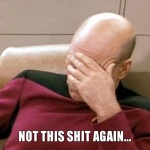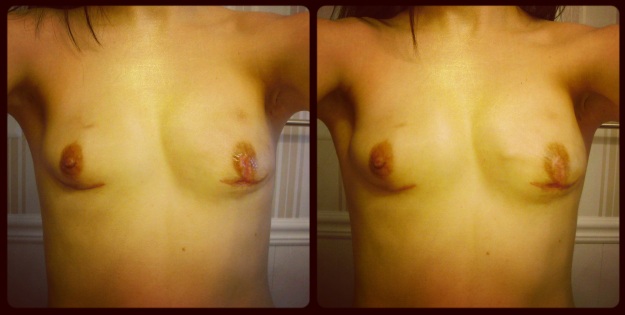It has been over three years since I started this process. On January 22, 2013 I underwent a prophylactic bilateral mastectomy to greatly reduce my risk of developing breast cancer and started breast reconstruction. Since then, I had a few complications, due to which the process took much longer than planned.

On March 1, 2016 I had my 9th surgery. Fun stuff!
Honestly, at this point, I’m tired of talking about it (and feel like my friends and family are tired of hearing about it too). I figured I should at least tell you boys and girls, since it is part of my process and well, this is what the blog is for: to document my journey.
What I thought was my last procedure was in July 2015, when we swapped the expander on my right with an implant. After that surgery, I received IV antibiotics for a month (see post: PICC life). Things cleared up and three months out I went on vacay to Mexico, where I finally was able to wear a bikini without an expander! I enjoyed being done and was very much relieved.
Shortly after, I noticed a bit of a divot above my right side. At the time I thought: no biggie, things take time to settle and it wasn’t really that bad. Over the next couple of months, the divot got deeper and the implant dropped lower. By January I knew that the implant had bottomed out and surgery was the only way to fix it. After consulting with my plastic surgeon, I scheduled the procedure. Over the next two months I went back and forth on whether I would actually have it. On one hand, I was displeased with the outcome and did not like seeing it in the mirror; on the other, I have experienced multiple complications and was afraid of the possibility of more issues. I had it. The PS did a pocket revision; easy surgery and super easy recovery.
 Although the tone of this post may not be entirely positive, I am in a good place. I feel great and still have no regrets about having the PBM. Somebody told me that it wouldn’t be easy and they were right. Totally worth it, though. However, I won’t say I’m done, because I’ve already declared that a couple of times and was wrong. We shall see where this goes. So far everything looks good.
Although the tone of this post may not be entirely positive, I am in a good place. I feel great and still have no regrets about having the PBM. Somebody told me that it wouldn’t be easy and they were right. Totally worth it, though. However, I won’t say I’m done, because I’ve already declared that a couple of times and was wrong. We shall see where this goes. So far everything looks good.



















 Disclaimer: Each person may give different levels of importance to the factors I list below and should discuss their options with their plastic surgeon. It is not my intention to convey that choosing anything different than what I chose is wrong. I am just presenting my logic. Right, wrong, or just plain stupid. 🙂 As always, I welcome your feedback!
Disclaimer: Each person may give different levels of importance to the factors I list below and should discuss their options with their plastic surgeon. It is not my intention to convey that choosing anything different than what I chose is wrong. I am just presenting my logic. Right, wrong, or just plain stupid. 🙂 As always, I welcome your feedback!


 What are
What are 
